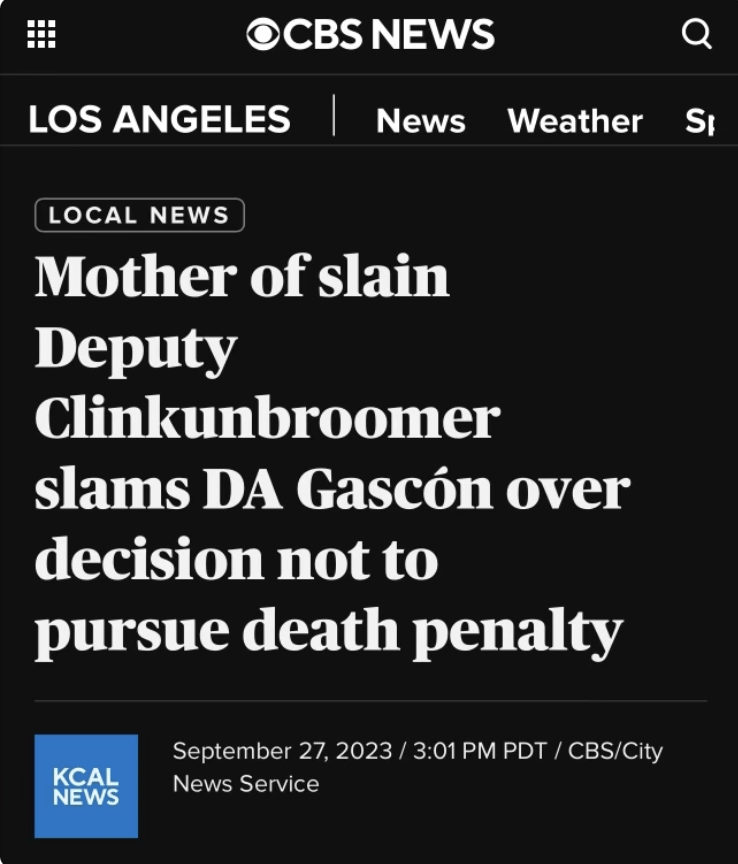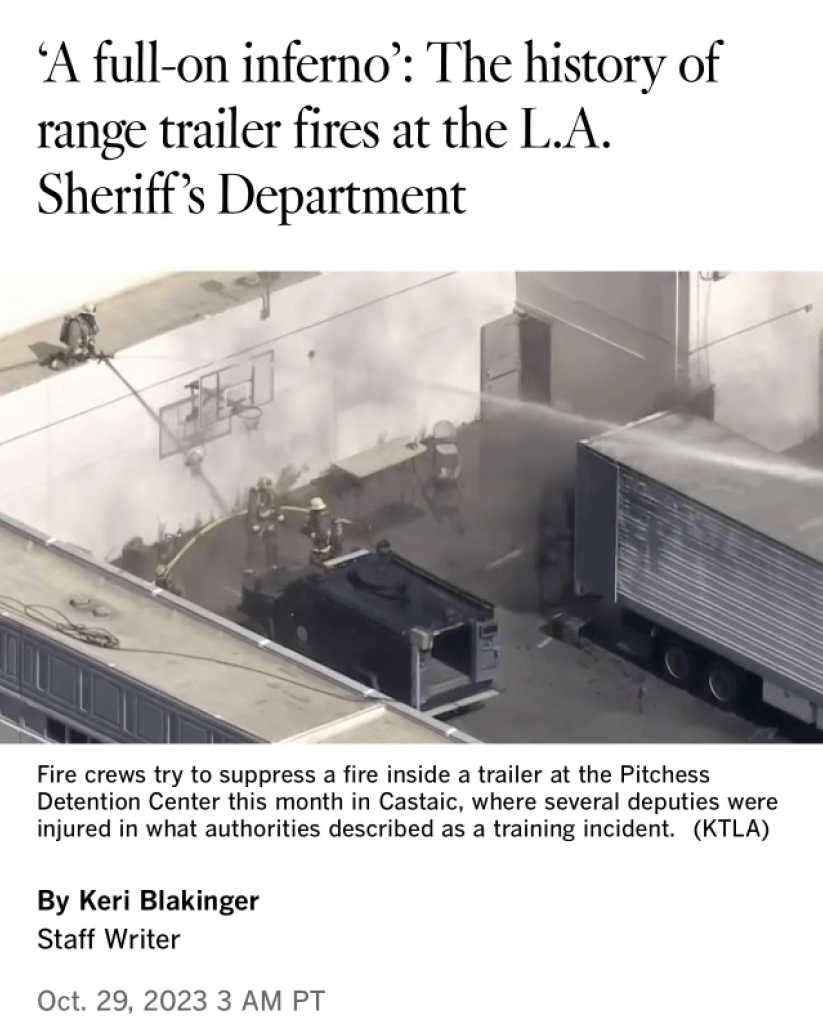“I can accept failure…but I can’t accept not trying.” – Michael Jordan
Is he really even trying?
Everything I’ve seen and heard over the past year and a half regarding the sheriff suggests that even if he is trying, It’s not very hard and not with a sustained, focused, or meaningful effort. A number of readers of my prior articles have asked me to explore some possible solutions to the issues currently facing the sheriff’s department. This article is intended to be a response to those requests.
Predictable Surprises
In his 2012 book, “Failure is an Option, A Primer and Guide for Managing Crises,” author Phillip Van Saun writes that failure to accurately foresee and plan for “predictable surprises” in the work environment is to fail at crisis preparedness and crisis planning. According to Van Saun, “the genesis of many crisis events can be traced back to not only a lack of problem recognition but also to a failure to prepare for negative outcomes.”
Negative Outcomes
Sound familiar? It seems that the sheriff’s department is rife with negative outcomes, and has been so over the past several years. Van Saun suggests that organizational leadership combat these negative outcomes and predictable surprises by asking themselves to examine the way business is being conducted that could possibly lead to a crisis.
As part of this process, Van Saun encourages leaders to establish a list of organizational “vulnerabilities.” It is in that spirit that I have come up with a few issues which I think are currently critically important to the department. I am confident that those of you reading this article will come up with other, equally important issues.
Vulnerabilities
Fiscal Responsibility/Accountability
Employee Health and Wellness
Equipment and Training
Failure to Lead
Fiscal Responsibility/Accountability
The sheriff’s annual budget is close to $4 billion dollars a year, yet it always seems they are much like the orphaned Oliver Twist, holding out their empty bowl and pathetically asking the Board of Supervisors, “please sir, I want some more.” When was the last time the department actually conducted a complete, meaningful, realistic forensic accounting of every dollar spent? When was the last time they considered the continuing existence/viability of the “sacred cows” still operating within the department? When was the last time any thought was given to not only “how” the money was being spent, but “why?”

While it is true that the purse strings are tied directly to the Board of Supervisors and that they must ultimately approve any additional funding, any request for additional monies should only be made after the department has proven to themselves and the BOS that they have done everything possible to mitigate spending that goes over and above what is currently allocated. This forensic accounting/audit must be done with an eye towards the future, not the past. Things that may have been relevant 5-10-20 years ago may well have lost their usefulness in today’s world and should be considered for the chopping block.
This internal accounting may also show that the department has been underfunded for a number of years, which may well be the case. The only way to determine this possibility is through an honest review of its current funding vs current expenditures. We have all seen how prices for virtually everything have skyrocketed over the past few years. Has the department funding adapted to this reality? I am guessing it has not.
Employee Health and Wellness
I don’t think there will be any pushback on the fact that this administration has utterly failed in this arena. A record number of employee suicides, record highs in forced overtime, drafting, CARPing, employees lateralling out to other agencies, a high number of employees opting to remain IOD (Injured on Duty) instead of returning to work. A workforce that is disgruntled, maligned, and marginalized on a daily basis. A workforce aching for true leadership and finding none.
Unfortunately, this current administration seems to fall silent when it should be standing tall to support and defend its personnel when controversial incidents occur. I can think of a number of recent high-profile incidents wherein the sheriff and his executives could have and should have spoken up for their people.
The recent East LA incident where the deputies had to struggle with a known gangster who was armed with a handgun, who happened to have a prosthetic leg comes to mind. When the media and others began pumping out false narratives and others were protesting in front of East LA Station, where was the sheriff?

When deputies in Lancaster responded to an incident where a woman answered the door, large kitchen knife in hand, proclaiming she was going to “stab” her boyfriend and ended up getting shot, where was the sheriff? When “activists” and the media began spouting falsehoods and pushing outlandish, demonstrably false narratives, where was the sheriff?

When the weak LA County District Attorney refused to file a death penalty case against the murderer who ambushed and assassinated Deputy Ryan Clinkunbroomer as he sat in his radio car, where was the sheriff?

In fact, where do we see the sheriff these days? Eating In-N-Out, going to barbeques and playdates in parks, hanging out and glad-handing politicians, anything but working tirelessly to improve not only the sheriff’s department, but the lives and working conditions of his employees. Where is he in times of crisis? What has he done about the myriad of issues facing the department?
All of the above noted incidents directly affect the health and wellbeing of virtually every member of the sheriff’s department, yet this sheriff seems to think that “hamburgers and hugs” are more important than directly working to create meaningful change.
Equipment and Training
We need to look no further than two recent incidents to illustrate this point. Let’s look at the abysmal status of the LASD bus fleet, and the recent explosion inside an antiquated mobile range that seriously injured two deputies.
With fewer than 25 buses operational out of a fleet estimated to be approximately 80-plus, the department is ill-equipped to handle the daily responsibility of transporting its jail population to courthouses throughout the county of Los Angeles. I understand that the judges being affected by this situation are up in arms about the department’s inability to provide adequate, dependable transportation services to those inmates needing to get to court.

This situation is highlighted by the fact that patrol stations are now being tasked with getting their detainees to court on their own. This means that deputies assigned to these stations are being required to drive prisoners to various courthouses to make up for the lack of reliable bus transport. What does that mean? It means that patrol stations are now suffering under the even greater burden of diverting uniformed deputies away from their patrol duties to handling transportation duties. This is dangerous and unsustainable.
How about thinking outside the box and seeing about contracting with outside agencies for some help during this shortage? The CHP, LA METRO, Ventura County Sheriff, San Bernardino County Sheriff, Riverside County Sheriff and even the CDCR (state prison system) all manage bus fleets that may be able to assist in getting our prisoners to court. Additionally, since there are no buses for Transportation Bureau personnel to drive, how about they get diverted to the stations along with the “swampers” (bus security deputy) to get inmates to court instead of using individual station deputies to handle the job?
As for the sorry state of department training, one only needs to look at the horrific situation where the mobile range at PDC (Pitchess Detention Center) exploded with two deputies inside. This catastrophic event should have never occurred, as the trailer had been taken out of service to make room for a newer, safer trailer. Why it was put back into service for even a short while is something that needs close scrutiny.

It is my understanding from speaking with numerous people on the department that the training budget is woefully inadequate and that training has become haphazard at best. We all recall when the state of California threatened to decertify the entire training bureau a few years back. Training should be an absolute priority. Why isn’t it?
Failure to Lead
This probably should have been my first critical issue, as everything above is directly related to this factor. I have noted on several occasions my belief that this sheriff is attempting to manage instead of leading. This fact is readily apparent when reviewing the three prior factors noted above.
In Van Saun’s book, he notes that failure to identify and prepare for the vulnerabilities within the organization will result in them potentially becoming crises. Failure to plan for and respond to an identified crisis (predictable surprise) will ultimately produce an “emergency.” I would say that the vulnerabilities I have identified here have already metastasized from being potential crises and are all now full-blown emergencies. That being the case, the department has seemingly missed golden opportunities by failing to plan, prepare, and shortstop issues that may have well been nipped in the bud long before they got to this state of emergency it now finds itself in.
Indeed, by failing to plan and failing to make decisions early on, this administration has ultimately decided that failure is indeed an option. It is a sad state of affairs, and cannot be handled appropriately unless this administration kicks into gear and begins to deal with reality. Hamburgers and hugs simply won’t do it.







Follow Us